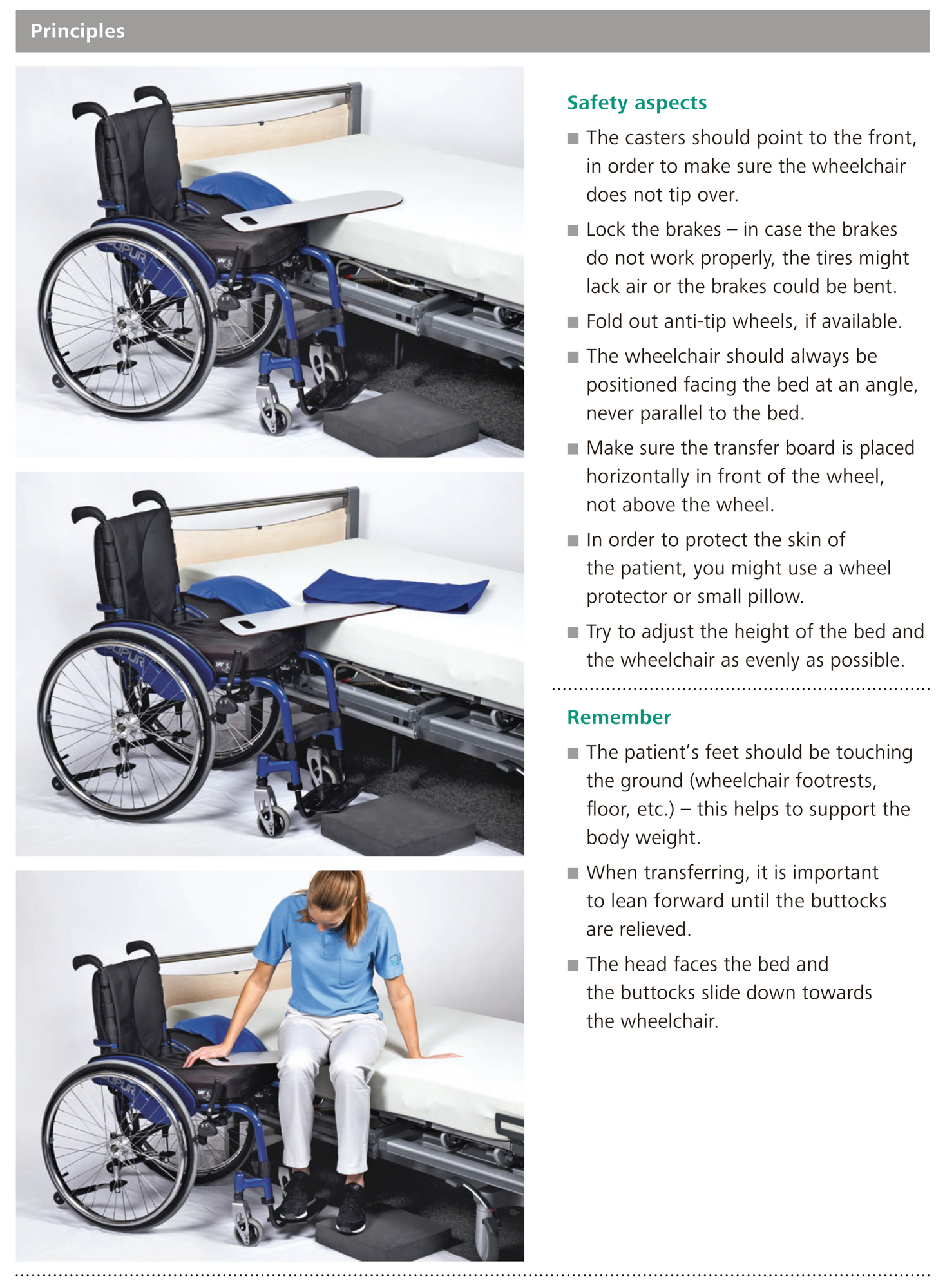
- 2 minutes to read
- 29 July 2019

What do I need to consider with regard to the shoulders?
The shoulder is the most heavily-strained joint with regard to mobilisation – that applies to sitting up and transferring. It is therefore important to protect the shoulders whenever it is possible, e.g. the patient should never be pulled by his / her arms to help him / her sit up, and should never pull himself / herself up with a trapeze or a bar.
How can other people help with transferring?
When transferring, caregivers should stand in front of the wheelchair, in order to be able to react immediately if the patient loses his / her balance and falls. It is important not to restrict mobility, and thus the independence of the patient, by standing too close.
Poor transferring bears a high risk of injury, e.g.:
- Skin damages
- shear forces, which can cause skin cracks
- abrasions
- injuries affecting the deeper layers of skin, which in turn can cause pressure sores
- Falls with health consequences
- bruises, abrasions, lacerations
- fractures
Why should I never allow anybody to pull me by my hands to help me sit up?
This movement is harmful both to your health and the health of the caregiver – this way, your shoulders are heavily strained, which can cause serious long-term damage. For the caregiver, this could result in back problems. When sitting up this way, you are not able to assist, and therefore also not able to control your movements.
When someone helps me with transferring while travelling, people always lift me by putting their arms under my shoulders – this causes me shoulder pain. What should I do?
There are situations where lifting under the shoulders should be avoided, and this is frequently the case during airplane transfers.
When being lifted it is important to press down your shoulders in order to stabilise them. If you cannot do this or already have prob-lems with your shoulders, a gait belt can help. A gait belt is a wide belt, equipped with lifting handles, that is put tightly around your waist and enables the caregiver to lift you up without straining your shoulders.

Be the first to comment!